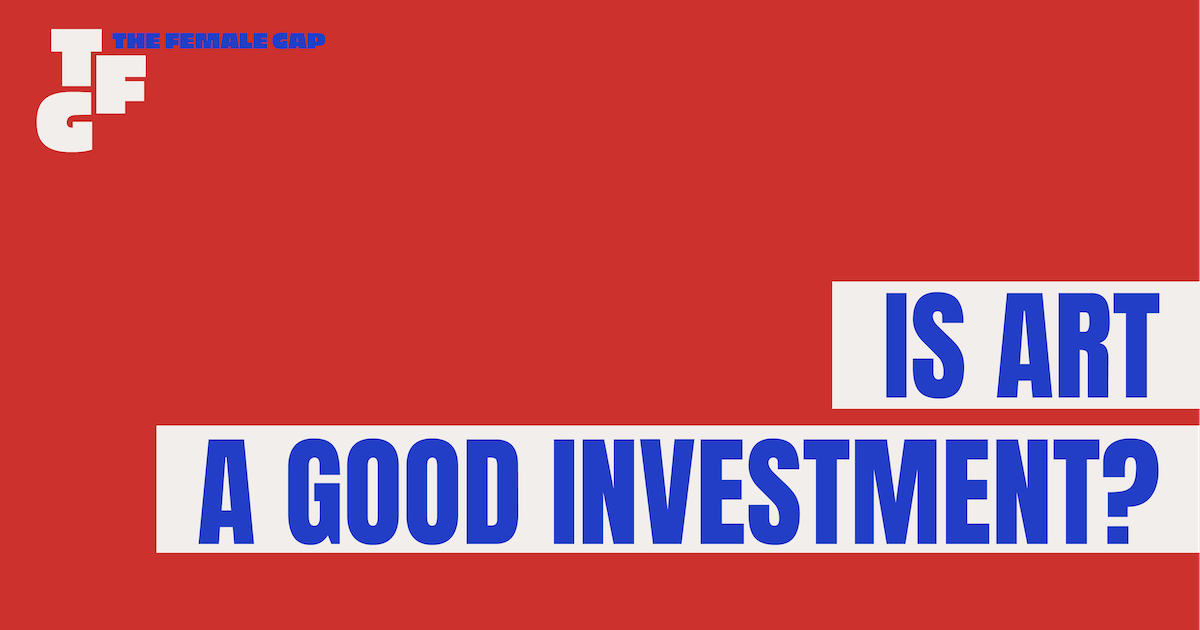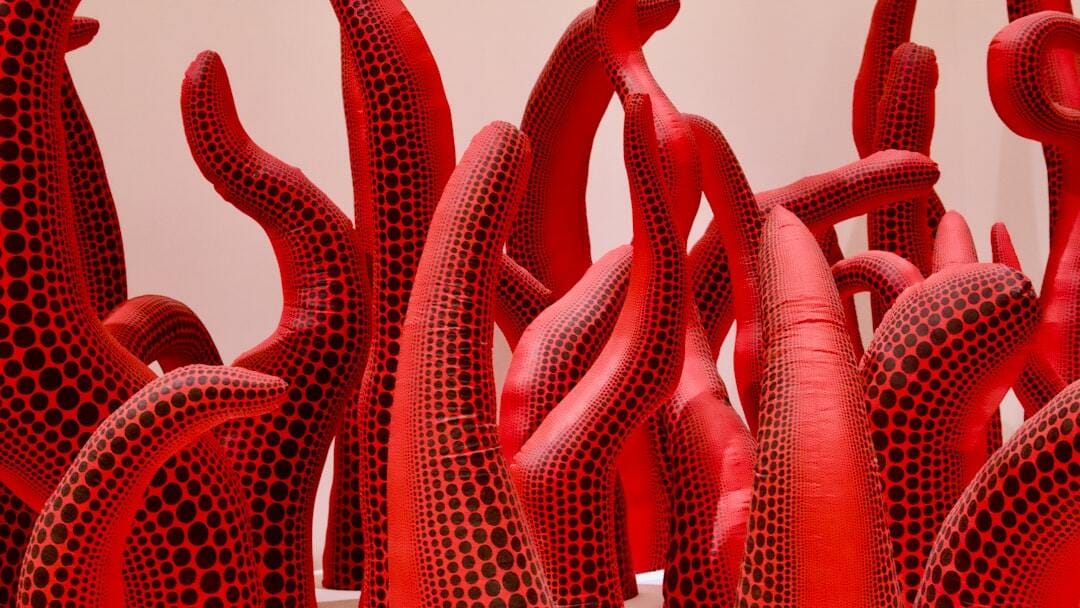- The Female Gap
- Posts
- Can Banksy make you rich? 🖼️
Can Banksy make you rich? 🖼️

Hello ladies and gents,
it's The Female Gap, your one and only source into the fabulous world of finance and money.
I didn’t want our second edition to be a boring 101 on finance, so I prepared something a bit different.
So let’s get it going.
Can Banksy make you rich? 🖼️
Closing the Gap - Claudia Goldin
Book of the month - Psychology of Money - part II
LET’S COVER THE BASICS
Can Banksy make you rich?
Wouldn’t it be fantastic if one day Banksy would come by your house, decide that your facade is a great canvas for his next artwork and made your lovely home a very lucrative piece of art? Well, since the chances of that happening are probably lower than winning the lottery, I have an alternative option for you.
You might not be able to own the entire Banksy, but you can own a piece of it.
But quick story before we start.
I'm sure everyone remembers the time when Banksy shredded his “Girl With The Balloon” at an auction. That painting was sold for $1.4 million right before Banksy “destroyed” it. In 2021 it was sold for $25.4 million. As they say “one man's trash is another man's treasure”. In this case literally.
But let’s start at the beginning.
The global art market totaled $67.8 billion in 2022, growing by 3% year-over-year and reaching its second-highest level to date, according to The Art Market 2023.
Over the last 10 years – apart from the disruption during the Covid pandemic – the art market has consistently outperformed the S&P 5001. We see that, if we compare the S&P 500 with the Artprice100© index2 which is compiled out of 100 blue-chip artists.
And the blue-chip artists are? 🤔
They are well-established artists that usually sell for the highest price at auction houses and become a more valuable investment with time - Picasso, Van Gogh, Monet etc. You can find the entire list here - Artprice.com

But which art should you invest in 2023? 💭
According to many reports, the market is shifting in favor of Contemporary art - Yayoi Kusama, Jeffrey Lynn Koons, Jean-Michel Basquiat, Keith Allen Haring, Banksy etc. You can find the list of other prominent contemporary artists here.
Graph below (curtesy of Masterworks) shows that art, especially Contemporary art, is outperforming many other assets on the market during high inflations periods. Important info in this point in time I would say.
But what exactly makes the art so valuable you might ask. Well, a couple of things.
The reputation or popularity of the artist
The rarity of the work
The condition of the work (remember the Banksy story from above?)
Demand for the artist’s work
The overall state of the art market
Now let’s look at some of the reasons why art might be a good investment for you.
A long-term reliable investment - Unlike stocks or other investments, art does not subscribe to a yo-yo diet (up and down and up and down). This was especially true during the 2020 pandemic, where other markets fluctuated significantly, while the art market remained stable. Art is basically like wine - it gets better with age.
Diversification of assets - art can be a great way to diversify your investment portfolio. (you know that saying - don’t put all your eggs in one basket.)
Passion & Hobby - it’s a bit different than collecting stickers when we were young, but it can also be a great hobby if you are interested in art. It can also be a great conversation starter on your first date.
Supporting your local artists or friends - maybe your friend will become the next Banksy, who knows.
Establishing legacy - if you would like to be known for more than just that aunt that collected bad choices in life.
However, proceed with caution - all investments come with a risk and each one has a different cons to it.
And they are?
Lack of liquidity - which means that you can not sell your Banksy tomorrow, because there might not be a customer that wants to buy it. So do not invest your emergency fund into art.
Subjective, unpredictable value - art is a very subjective investment and might also depend on the reputation of the artist and market trends.
Fraud and counterfeiting - fake it till you make it does not work in art world. To avoid this happening to you, try buying from a reputable source, such as galleries and art funds that have authenticators in their teams or if you are lucky and you know the next up and coming artist, buy directly from them.
High transaction costs - it' ain’t cheap buying a Picasso or a Monet and hanging it up in your living room. Buying and selling art usually involves auction fees, commissions, storage, and transportation costs.
Risks of damage or loss - Lupin might be a fictional character (great series btw), but real art thieves are out there. Or there might be flood or fire because you forgot to turn off that iron in the morning.
And with all this new gained knowledge there is still that tiny little problem - not a lot of us have millions sitting just waiting to buy that next Monet, when and if it comes to market.
No worries my ladies (and gents). I have a solution for you 💡
It’s called - big word incoming - Fractionalization3. Nothing complicated, this just means that instead of buying the entire art piece, you buy a part of it. And when many people do that, you collectively own that art. This also means that you can own not one, not two, but many art pieces (diversifications = 🗝️). And you can add “art collector” to your hobby list.

One company that does that and has acquired many famous pieces so far is Masterworks. They also do all the research on all the pieces they buy, so they basically do half of their work for you.
But if you feel like art investing is not for you, you can simply buy something nice to hang up in your living room.
GLOSSARY
1 S&P 500 - is a stock market index tracking the stock performance of 500 of the largest companies listed on stock exchange in the United States.
2 Artprice100© index - a portfolio of the world’s 100 top-selling artists based on their auction revenue over the previous five years. List of included artist can be found here.
3 Fractionalization - it allows investors to own a portion of a larger artwork. This can provide investors with access to valuable works that they may not be able to afford on their own.
CLOSING THE GAP
Claudia Goldin
You probably don’t know who Claudia Goldin is.
But you should. Truth be told - neither have I until the last week.

Last month she won a Nobel Prize in Economics. For the third time in 54 years, a woman has won this prestigious prize. She is also the first woman to receive the award on her own rather than share it with men.
She got it for her research on the causes of the gender pay gap. One of the gaps that we will definitely be exploring in our newsletter. What she found out is that the gender pay gap is connected to the birth of a first child. The gap begins to widen within the first two years after a woman had her first child, because women take on the majority of childcare duties, leaving less time for work.
Another reason why us women should educate ourselves on money matters.
BOOK OF THE MONTH
The Psychology of Money - part II
by Morgan Housel
This week we’ll start with these thoughts:
Getting money is one thing.
Keeping it is another.
The author says that those are two different skills. The first one requires taking risks, working hard, being optimistic and putting yourself out there. The second one is the opposite of taking risk. It requires humility, fear that it can all go away and acceptance that at least part of it can be attributed to luck.
Fitting to our topic of today’s newsletter - art investing - is one of the stories he tells about Heinz Berggruen, one of the most successful art dealers. He did not pick a couple of artists and their pieces and hoped for the best. He collected hundreds of pieces, held them for long enough time and then made a fortune on a couple of them that made the biggest return.
Moral of the story - a few things in life can give you the greatest return, even if all the other ones are failures. And the power of compounding.
But which return are you looking for in life? In essence, the question is -
What makes you happy?
His answer is very simple - freedom.
The highest form of wealth is the ability to wake up every morning and say “I can do whatever I want today.” and don’t we all want just that? The best things the money can buy you is the control over your time.
And how do you achieve that? Not by getting rich, but by getting wealthy.
Rich, he says, is the current income you have. You can spot the “rich” people because you can see them flexing their “richness” in new cars, houses, designer clothes. But wealth is hidden. Is the income not spent. Its value lies in offering you options, flexibility and essentially - time and freedom.
The problem he sees in modern capitalism is, that it is so ingrained in us that having money = spending money, that we do not often see the restrain it takes to actually be wealthy and since we can’t see it, it’s hard to learn about it.
It is very hard to convey the lessons from these chapters, so I highly recommend buying this book. Or, if you prefer listening/watching instead of reading - Morgan Housel was this week a guest on a podcast that I love listening to called The Diary of a CEO. You can find it on Youtube or wherever you listen your podcasts to (Apple or Spotify).
SOME NEWS
So what is The Female Gap? Read the first edition of the newsletter here.
If you would like to read more about Claudia Goldin and her work. Recommending the read.
Did you have any difficult meetings lately and you did not know how to cope with them? This might help.
What'd you think of this week's edition? 💋 |
DISCLAIMER: None of this is financial advice. This newsletter is strictly educational and is not investment advice or a solicitation to buy or sell any assets or to make any financial decisions. Please be careful and do your own research.


Reply